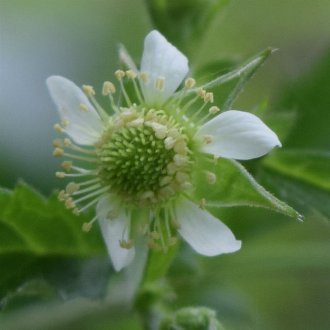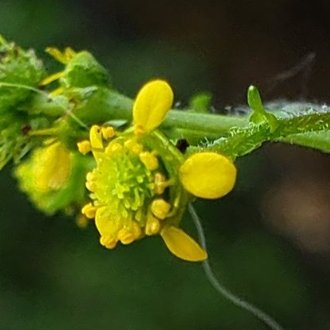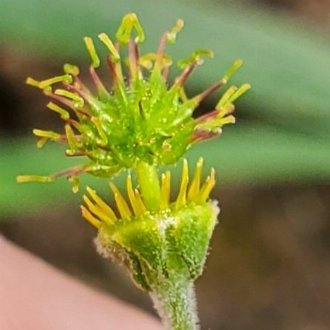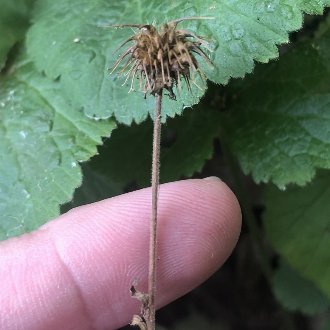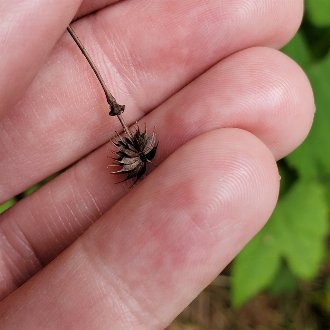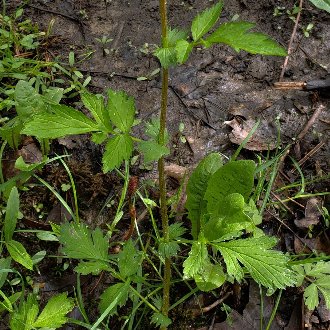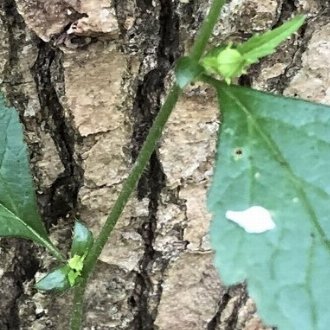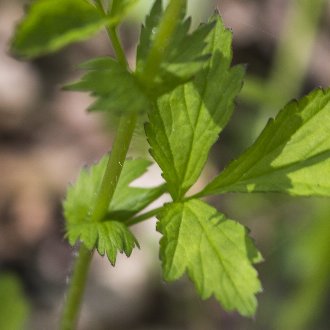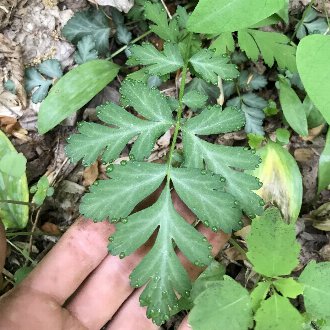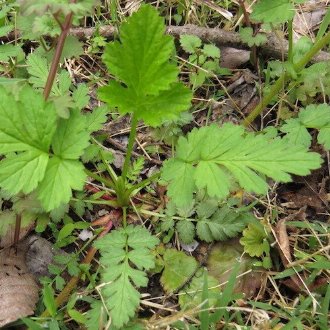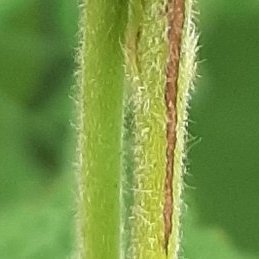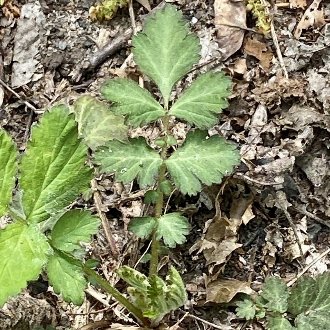White Avens vs Spring Avens
These species are sometimes confused where both occur. They are easy to distinguish by bloom color and timing, as well as fruit size and structure. Although both species have highly variable leaf shapes, there are differences in leaf shape and texture, and leaves on the stem are particularly easy to distinguish. G. canadense has a much broader range and is also found in a wider range of habitats, including sunnier, drier conditions, anthropogenic habitats, and adverse soil conditions. G. vernum is less tolerant of sunny, dry conditions, and is more restricted to deciduous woodlands with rich, loamy soil and adequate moisture.
White Avens (Geum canadense) | Spring Avens (Geum vernum) |
An perennial with inconspicuous flowers native and common across much of central to eastern North America. | A perennial with inconspicuous flowers, native to the central to eastern US, completing most of its growth in the spring. |
Flowers are white, much larger (Petals 4–8 mm.) Blooms significantly later: late May to June in much of range, April at the earliest. Photo © , CC BY-SA 4.0. | Flowers are yellow, much smaller (Petals 1-2mm.) Blooms significantly earlier: late April to early May in much of range, March at the earliest. Photo © aarongunnar, CC BY 4.0. |
Fruiting body attached directly to calyx. Bracts (leaf-like structures) present directly under fruit. Photo © Sam Kieschnick, CC BY 4.0. | Fruiting body separated from the calyx (sepals) by a short stem. No bracts under fruit. Photo © Will Kuhn, CC BY 4.0. |
Fruit averages larger. Fruit styles (long, hooked appendages attached to fruit) are much longer (2–8mm) Photo © Sam Kieschnick, CC BY 4.0. | Fruit averages smaller. Fruit styles are much shorter (1.5–3mm) Photo © Alex Zorach, CC BY-SA 4.0. |
Cauline leaves (along stem) usually have at most 3 leaflets, become simple higher up on the stem and reduced in size at the top. Photo © Mila, CC BY 4.0. | Cauline leaves are all compound, usually with 3 leaflets, but looking like 5 as the stipules resemble leaflets. Terminal leaflet is sometimes deeply subdivided. Photo © aarongunnar, CC BY 4.0. |
Stipules (leaf-like structures where the leaf connects to the stem) on cauline leaves are much smaller, often insignificant relative to the size of the leaf. Photo © ch3chia, CC BY 4.0. | Stipules on cauline leaves are much larger, often comparable in size to the leaflets and looking like part of the leaf, clasping the stem. Photo © aarongunnar, CC BY 4.0. |
Basal foliage tends to show more bluish color and tends to be tougher and thicker, especially on the oldest leaves. Photo © Andrew Conboy, CC BY 4.0. | Basal foliage less bluish and tends to be more delicate. Photo © Theo Rickert, CC BY 4.0. |
Hairs on stem, when present, tend to be much shorter. Photo © florawhite, CC BY 4.0. | Stems are pilose, covered in soft, long hairs. Photo © Adam Kranz, Public Domain. |
Basal leaves may have a contrast between 3-5 larger "major" leaflets and 0-4 smaller "minor" ones. Leaves with many leaflets are often wider at their widest point, relative to the length of the leaf. Photo © Sandy Wolkenberg, CC BY 4.0. | Basal leaves may have up to 11 leaflets. Leaves with many leaflets are usually narrower at their widest point, and leaflets close to the base of each leaf are relatively similar in size. Photo © florawhite, CC BY 4.0. |
References & External Resources
These short lists show only links helpful for ID. For a complete list of references and resources also covering other aspects of ecology, visit the links section of the full article on each plant, which is the first entry here.



